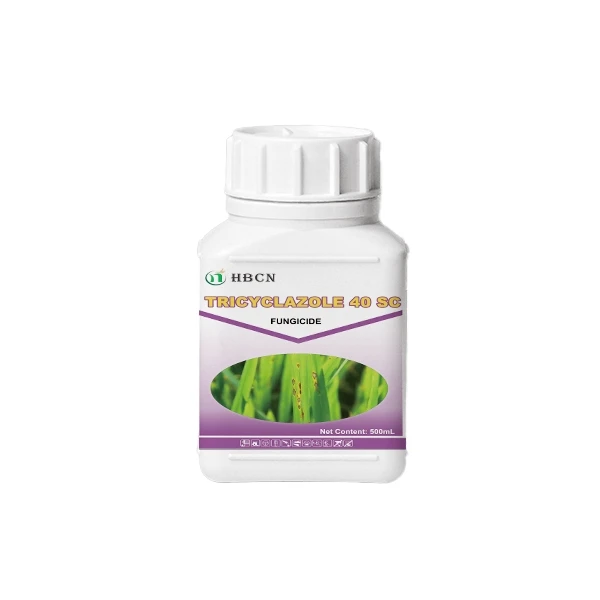
Th8 . 21, 2024 06:40 Back to list
Flutriafol Uses and Benefits for Agricultural Companies and Crop Protection Strategies
Flutriafol is a broad-spectrum fungicide widely used in agriculture for the management of various fungal diseases affecting crops. It belongs to the triazole group of fungicides and is known for its efficacy in controlling foliar and soil-borne pathogens. This article explores the significance of flutriafol, its applications, and the companies involved in its production and distribution.
What is Flutriafol?
Flutriafol is a systemic fungicide that acts by inhibiting the biosynthesis of ergosterol, a critical component of fungal cell membranes. This mechanism of action disrupts fungal growth and reproduction, making flutriafol effective against a wide range of pathogens, including those that cause diseases like powdery mildew, rusts, and blights. Its effectiveness makes it a valuable tool in modern agriculture, especially given the increasing resistance of fungal pathogens to other classes of fungicides.
Applications in Agriculture
Flutriafol is predominantly used in the cultivation of various crops, including cereals, fruits, and vegetables. For instance, in cereal cultivation, flutriafol is known for its efficacy against diseases such as wheat and barley leaf rusts, providing farmers with a reliable solution to protect their yields. In fruit and vegetable production, it helps manage diseases that can significantly impact both yield and quality, ensuring that consumers receive healthy produce.
The timing of application is crucial; flutriafol is often applied as a preventative treatment rather than a curative one, meaning it is most effective when used before diseases occur
. This proactive approach helps minimize the impact of diseases on crop production, enhancing overall agricultural productivity.Companies Involved in Flutriafol Production
flutriafol para que sirve companies

Several companies play a crucial role in the production and distribution of flutriafol. Among them, multinational corporations such as BASF, Syngenta, and Bayer stand out as key players in the agrochemical industry. These companies invest heavily in research and development to improve the efficacy and safety of flutriafol formulations, ensuring that they meet stringent regulatory standards while providing effective disease control.
BASF, for example, offers a range of flutriafol-based products designed for different crops and application methods. Their commitment to innovation ensures that farmers have access to the latest advancements in fungicide technology. Likewise, Syngenta provides comprehensive crop protection solutions that include flutriafol, helping farmers maximize their yields while managing environmental concerns.
Emerging companies and regional manufacturers also contribute to the availability of flutriafol in various markets. These companies often focus on localized needs, tailoring their products and services to meet the specific demands of farmers in their regions.
Conclusion
Flutriafol serves as a powerful ally for farmers in the battle against fungal diseases, significantly contributing to the sustainability and productivity of agricultural practices. Its chemical properties, combined with the expertise of leading agrochemical companies, pave the way for effective crop protection strategies. As global agricultural challenges continue to evolve, the role of flutriafol and other fungicides will be instrumental in ensuring food security and supporting sustainable farming practices.
With ongoing research and development, the future of flutriafol looks promising, and it will undoubtedly remain a crucial component in the agricultural toolbox for years to come. Whether through established industry giants or innovative startups, the companies involved in flutriafol production and distribution play a vital role in supporting farmers to achieve their goals and feed the world's growing population.
-
Kasugamycin Fungicide: Efficient Bacterial & Fungal Control
NewsAug.02,2025
-
Emamectin Benzoate: AI-Optimized Pest Control Solution
NewsAug.01,2025
-
Best Abamectin 95% | Top Pesticide for Crop Protection
NewsJul.31,2025
-
Insecticide Spirotetramat 11% + Thiacloprid 11% SC at Good Price
NewsJul.30,2025
-
Best Abamectin SDS - Premium Quality & Reliable Safety Data
NewsJul.29,2025
-
Agrochemicals Pesticides Solutions for Sustainable Farming
NewsJul.29,2025
